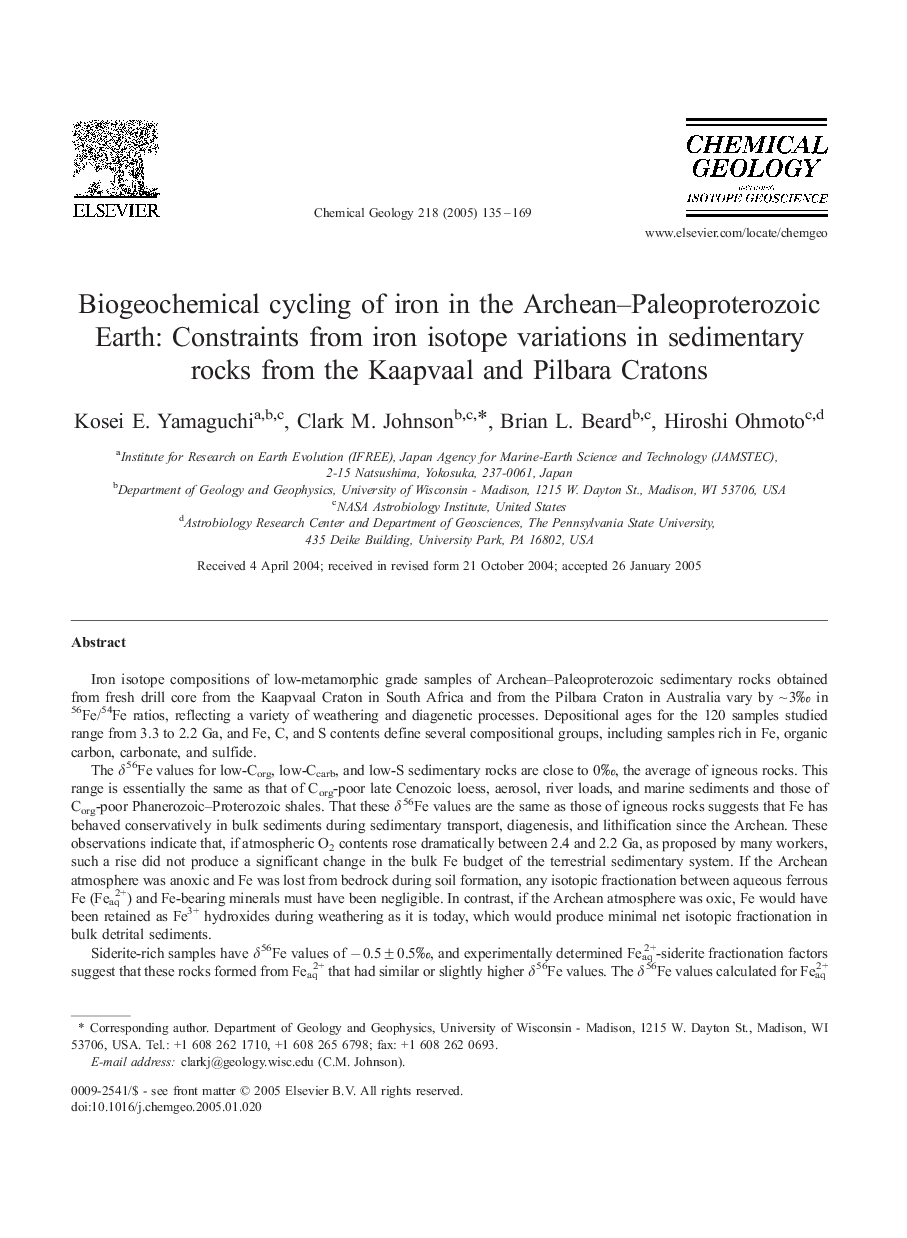| کد مقاله | کد نشریه | سال انتشار | مقاله انگلیسی | نسخه تمام متن |
|---|---|---|---|---|
| 9529047 | 1637788 | 2005 | 35 صفحه PDF | دانلود رایگان |
عنوان انگلیسی مقاله ISI
Biogeochemical cycling of iron in the Archean-Paleoproterozoic Earth: Constraints from iron isotope variations in sedimentary rocks from the Kaapvaal and Pilbara Cratons
دانلود مقاله + سفارش ترجمه
دانلود مقاله ISI انگلیسی
رایگان برای ایرانیان
کلمات کلیدی
موضوعات مرتبط
مهندسی و علوم پایه
علوم زمین و سیارات
ژئوشیمی و پترولوژی
پیش نمایش صفحه اول مقاله

چکیده انگلیسی
Siderite-rich samples have δ56Fe values of â 0.5 ± 0.5â°, and experimentally determined Feaq2+-siderite fractionation factors suggest that these rocks formed from Feaq2+ that had similar or slightly higher δ56Fe values. The δ56Fe values calculated for Feaq2+ overlaps those of modern submarine hydrothermal fluids, but it is also possible that Feaq2+ had δ56Fe values higher than those of modern hydrothermal fluids, depending upon the Feaq2+-Fe carbonate fractionation factor that is used. In contrast, Corg-rich samples and magnetite-rich samples have strongly negative δ56Fe values, generally between â 2.3â° and â 1.0â°, and available fluid-mineral fractionation factors suggest that the Fe-bearing minerals siderite and magnetite in these rocks formed in the presence of Feaq2+ that had very low δ56Fe values, between â 3â° and â 1â°. Reduction of Fe3+ hydroxide by sulfide, precipitation of sulfide minerals, or incongruent dissolution of silicate minerals are considered unlikely means to produce significant quantities of low-δ56Fe Feaq2+. We interpret microbial dissimilatory Fe3+ reduction (DIR) as the best explanation for producing such low δ56Fe values for Feaq2+, and our results suggest that DIR was a significant form of respiration since at least 2.9 Ga.
ناشر
Database: Elsevier - ScienceDirect (ساینس دایرکت)
Journal: Chemical Geology - Volume 218, Issues 1â2, 16 May 2005, Pages 135-169
Journal: Chemical Geology - Volume 218, Issues 1â2, 16 May 2005, Pages 135-169
نویسندگان
Kosei E. Yamaguchi, Clark M. Johnson, Brian L. Beard, Hiroshi Ohmoto,